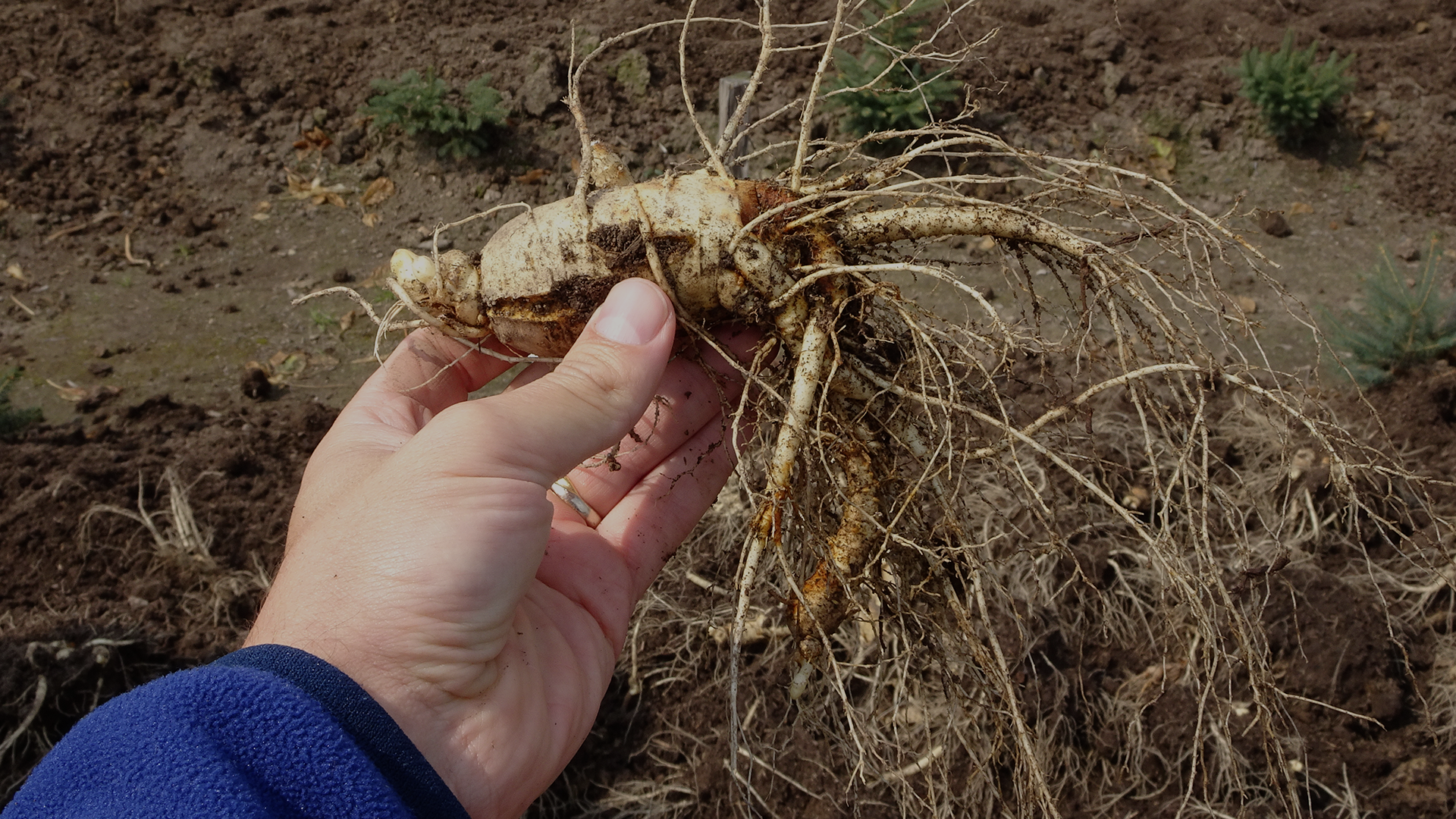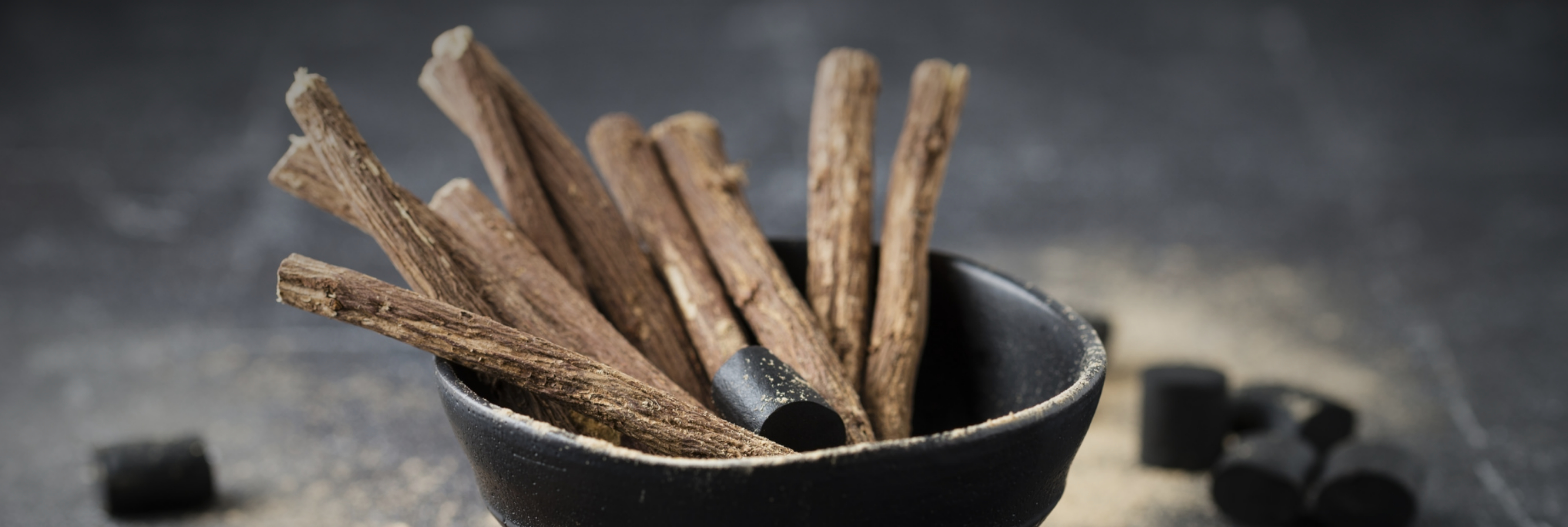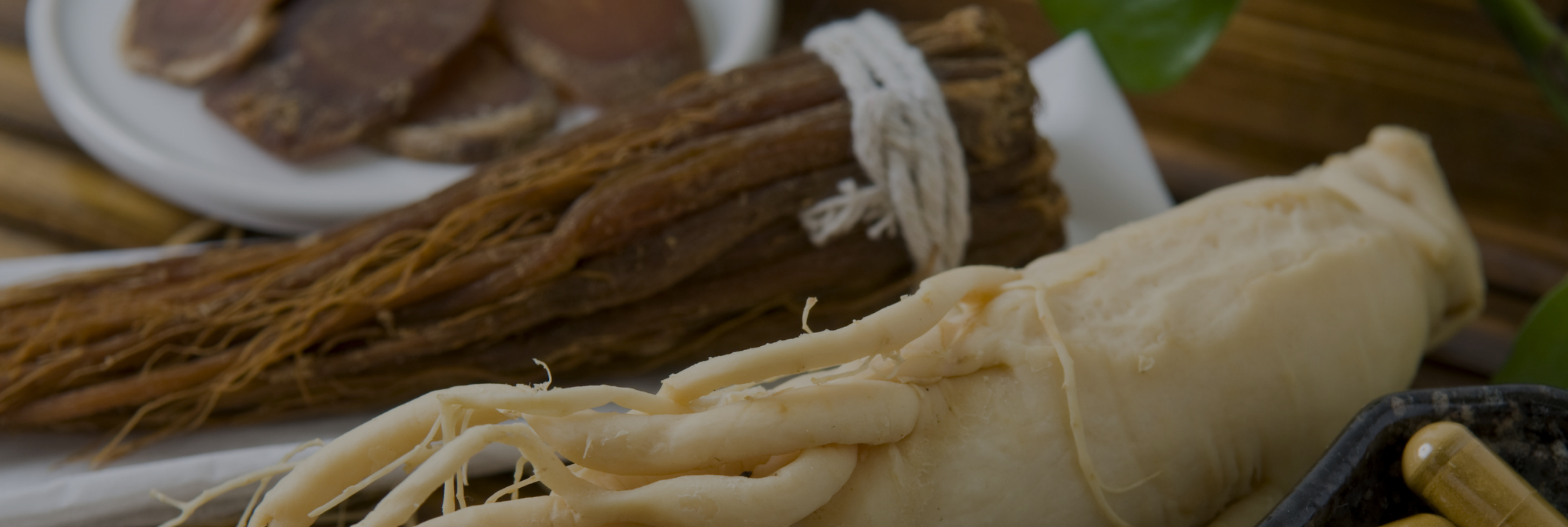Ginseng is a baseline medicinal plant. It is considered as one of the basis of Asian pharmacopoeia and has been used for therapeutic purposes for thousands of years. Thanks to scientific progress, properties of Ginseng have been confirmed by various scientific studies and assigned to several active ingredients. Nowadays, the organic ginseng is used for its virtues across the world. Powder, food supplement, flavored tea, energy drink… organic ginseng-based products are as many as varied. Let’s have a look on properties and benefits of organic ginseng.
A natural remedy of Asian medicine
Ginseng is a perennial plant which belongs to the family of Araliaceae. It constitutes one of the most popular natural remedies to this day. In reality, the term ginseng refers to several species of the genus Panax (in Greek: « remedy for all diseases »). The most known and studied specie is Panax ginseng C.A. Meyer. Native to South-East Asia, this specie of ginseng has been used for medicinal purposes for thousands of years. In Chinese traditional medicine, it is considered as a general tonic. In particular, it is used to fight against states of tiredness, stress, nausea, dyspepsia, inflammations and depressive disorders.
A plant with multiple therapeutic properties
Considering its many traditional uses, Panax ginseng C.A. Meyer specie interested the scientific community. Research studies highlighted numerous properties of Asian ginseng and confirmed its therapeutic potential. In particular, researchers unveiled its antioxidant power and its anti-inflammatory activity. The intake of ginseng revealed a protective potential against various inflammatory diseases such as colitis, dermatitis, asthma or osteoporosis. A positive effect on the protection of liver was showed, especially regarding the Non Alcoholic Fatty Liver Disease (NAFLD). Moreover, researchers obtained positive effects in the management of diabetes, cardiovascular diseases and some types of cancers and neurodegenerative diseases such as Parkinson and Alzheimer's diseases.
A concentrate of active ingredients
By studying properties of different qualities of ginseng, researchers identified various active ingredients, especially ginsenosides. These components are considered as the most active substances of Panax ginseng C.A. Meyer. They constitute a large family of molecules. Indeed, researchers managed to isolate more than forty different ginsenosides. Among these molecules, Rb1, Rg1, Rg3, Re and Rd ginsenosides were widely studied. They are mainly concentrated in the main root and rootlets of ginseng. Nowadays, a wide range of Panax ginseng C.A. Meyer extracts are available on the market.
>> How to choose a ginseng extract?
For example, it is possible to choose between a root or rootlets extracts, between a white or red ginseng and between an organic ginseng or a ginseng coming from a conventional farming.
To find out more about organic ginseng, feel free to contact our experts or visit our e-platform to see all our natural ingredients.
Sources:
- Jia L. and Zhao Y. 2009. Current Evaluation of the Millennium Phytomedicine- Ginseng (I): Etymology, Pharmacognosy, Phytochemistry, Market and Regulations. Curr Med Chem. 16(19): 2475–2484.
- Attele A. S., Wu J. A. and Yuan C. S. 1999. Ginseng pharmacology: multiple constituents and multiple actions. Biochem Pharmacol. 58:1685- 1693.
- Hasegawa H. 2004. Proof of the mysterious efficacy of ginseng: basic and clinical trials: metabolic activation of ginsenoside: deglycosylation by intestinal bacteria and esterification with fatty acid. J Pharmacol Sci. 95:153-157.
- Kang O.J. and Kim J-S. 2016. Comparison of Ginsenoside Contents in Different Parts of Korean Ginseng (Panax ginseng C.A. Meyer). Prev. Nutr. Food Sci. 21(4):389-392.
- Xie J. T., Shao Z. H., Vanden Hoek T. L., Chang W. T., Li J., Mehendale S., Wang C. Z., Hsu C. W., Becker L. B., Yin J. J. and Yuan CS. 2006. Antioxidant effects of ginsenoside Re in cardiomyocytes. Eur J Pharmacol 532:201–7.
- Joh E. H., Lee I. A., Jung I. H. and Kim D. H. 2011. Ginsenoside Rb1 and its metabolite compound K inhibit IRAK-1 activation--the key step of inflammation. Biochem Pharmacol 82:278-86.
- Cheng B., Li J., Du J., Lv X., Weng L. and Ling C. 2012. Ginsenoside Rb1 inhibits osteoclastogenesis by modulating NF-kB and MAPKs pathways. Food Chem Toxicol 50:1610e5.
- Lee B., Sur B., Park J., Kim S. H., Kwon S., Yeom M., Shim I., Lee H. and Hahm D. H. 2013.
- Ginsenoside rg3 alleviates lipopolysaccharide-induced learning and memory impairments by anti- inflammatory activity in rats. Biomol Ther (Seoul) 21:381-90.
- Lee K. W., Jung S. Y., Choi S. M. and Yang E. J. 2012. Effects of ginsenoside Re on LPS-induced inflammatory mediators in BV2 microglial cells. BMC Complement Altern Med 12:196.
- Zheng H., Jeong Y., Song J. and Ji G.E. 2011. Oral administration of ginsenoside Rh1 inhibits
the development of atopic dermatitis-like skin lesions induced by oxazolone in hairless mice. Int Immunopharmacol. 11:511-8.
- Kim J.H. Yi Y.S. Kim M.Y. and Cho J.Y. 2017. Role of ginsenosides, the main active components of Panax ginseng, in inflammatory responses and diseases. J Ginseng Res 41, 435-443.
Marc Roller, PhD
CEO & Partner Natural Origins - Head of Innovation









Leave a comment